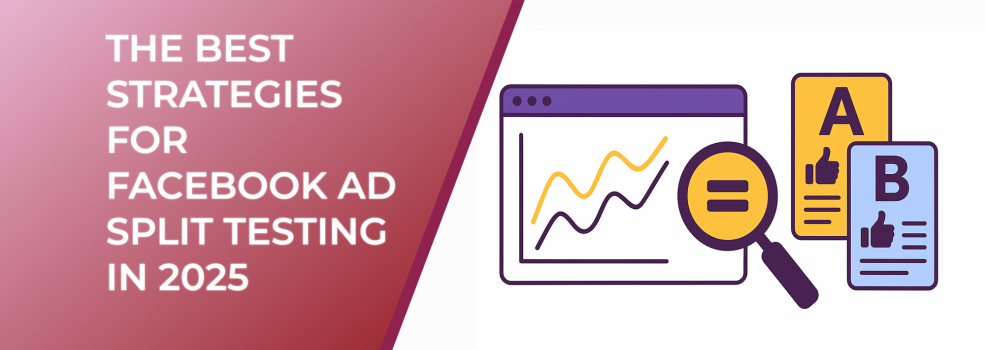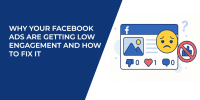1. Define Clear KPIs Before You Test
Before launching a test, decide which metric matters most: click-through rate (CTR), conversion rate, cost per click (CPC), or return on ad spend (ROAS). According to Meta's 2024 benchmark report, the average click through rate on Facebook ads was 1.2%, while high-performing campaigns often exceeded 2.5%.
Core components of a Facebook ad to split test—focus on one variable per test for clean insights.
Establish your baseline performance and use it to evaluate test results objectively.
For more on ad measurement, check out our article: Simple Questions for Measuring Facebook Ad Effectiveness
2. Test One Variable at a Time
When testing Facebook ads, isolate a single variable: headline, ad creative, audience, or call-to-action (CTA). This ensures that any performance difference is directly tied to the variable you're testing.
Core components of a Facebook ad to split test—focus on one variable per test for clean insights.
Popular elements to test include:
-
Ad copy tone (formal vs casual)
-
Creative format (image vs video)
-
CTA buttons ("Learn More" vs "Shop Now")
-
Audience segments (based on custom lookalikes using LeadEnforce tools)
If you’re targeting a narrow segment, avoid these pitfalls: When Your Audience Is Too Small
3. Leverage Facebook's Advantage+ Tools
Meta has continued evolving its Advantage campaign budget tools, allowing more automation in budget allocation. When split testing ad sets, enable Advantage Campaign Budget Optimization (CBO) to automatically funnel budget toward the best-performing variant.
This is especially useful when testing across multiple demographics or interest groups simultaneously.
Want to understand how Facebook allocates ad spend? Read: Factors That Influence the Cost of Facebook Ads
4. Use Data-Driven Audience Targeting
Split testing isn't limited to ad creatives. One of the most underutilized areas is audience targeting.
Segment audiences by:
-
Buyer intent
-
Engagement behavior
-
Time spent on site
Then run the same creative to different segments and compare results. This method often leads to a 20-30% improvement in conversion rates over standard interest-based targeting.
5. Prioritize Data Volume and Duration
Effective split testing requires enough impressions to generate statistically significant results. Aim for at least 1,000 impressions per ad variant. Run each test for at least 4-7 days to account for day-of-week performance variation.
Also monitor ad impressions Facebook, cost per result, and frequency metrics to avoid ads fatigue and skewed data.
6. Avoid Common Mistakes
Many advertisers fail at split testing because of flawed setups. Here are key pitfalls to avoid:
-
Testing too many variables at once
-
Ending tests prematurely
-
Ignoring cost-efficiency metrics
For a detailed breakdown of what not to do, see: Facebook Ad Mistakes – All You Should Know
Conclusion
Split testing is not just a tactic but a mindset. In 2025, as Facebook ads become more automated and competitive, success depends on continuous experimentation and smart analytics. Whether you’re optimizing for ad impressions Facebook, refining your ads analysis, or maximizing ROI with advantage campaign budget, split testing is essential.
Start with a hypothesis, test it rigorously, and let the data guide your next move.

